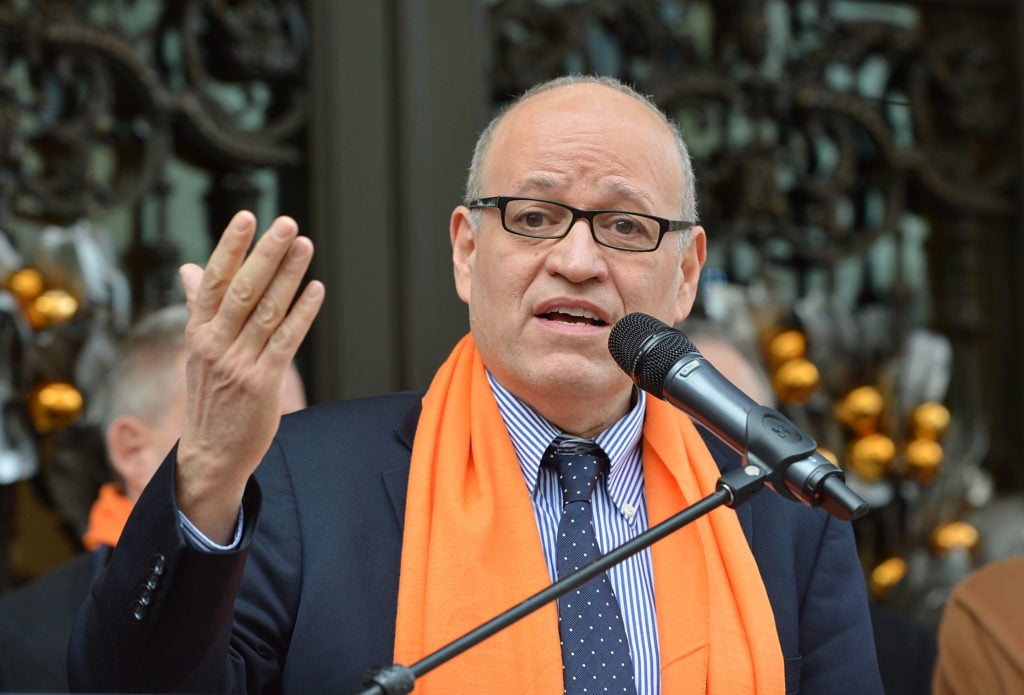Art World
After a Five-Year Term, Tom Finkelpearl Is Out as New York City’s Commissioner of Cultural Affairs
The reason for his departure is unclear.

The reason for his departure is unclear.

Caroline Goldstein

After five years on the job, New York City’s Commissioner of Cultural Affairs Tom Finkelpearl is leaving his post. The news was announced in a press release on Thursday morning, with a brief statement from mayor Bill de Blasio: “Tom has done a remarkable job in creating a more equitable and accessible cultural sector… he has touched the lives of millions of New Yorkers.” The reasons for the departure were not explained.
Prior to signing on to the de Blasio administration in 2014, Finkelpearl had served as the director of the Queens Museum for more than a decade, where was known for his focus on community engagement. Soon after he took over as culture czar, his department launched CultureAID to address the role of arts and cultural organizations in providing relief to the city in the wake of Superstorm Sandy.
Among his signature achievements was the launch of the IDNYC program. The popular city-issued ID provides benefits at 40 New York cultural attractions, including the Metropolitan Museum of Art and the Brooklyn Museum, but also doubles as a form of needed ID for undocumented people. “The idea of attaching these fantastic cultural benefits to the card was to say everybody in New York needs to want this card,” he told WNYC in 2016. “So it’s not that ‘Hi, I’m undocumented, here’s my ID card.’”
Finkelpearl also spearheaded the city’s first-ever study of the diversity of New York cultural institutions and the city’s first-ever Cultural Plan. Based on meetings drawing some 200,000 community members, artists, art administrators, and business owners around the city and unveiled in 2017, the CreateNYC plan set sweeping goals of addressing issues affecting the cultural economy, including gentrification, inclusivity, and accessibility. It was criticized both by activists for being merely symbolic and by museum officials who resisted the idea that their future funding might be tied to diversity goals.
A streamlined version of the plan released earlier this year pared down the 90-plus points of the original plan to five overarching action objectives. The Department of Cultural Affairs—which remains among the country’s largest cultural funders, with an annual budget significantly greater than the National Endowment for the Arts—released a robust $212 million budget for 2020, a marked increase from last year’s at $198.4 million.
Finkelpearl’s tenure was also marked by sharp debates over controversial public monuments. His departure comes just weeks after the conclusion of a public commission that pitted the city’s expert panel against local activists over a sculpture to replace an East Harlem monument to the doctor J. Marion Sims, who despite being called the “father of modern gynecology,” repeatedly performed surgery on enslaved patients without using anesthesia.
The panel selected a proposal by Simone Leigh, who has had a slew of high profile exhibitions at the Guggenheim, the Whitney Museum, and on the High Line. Members of the community protested the decision, arguing that the process had been rigged in favor of the art world, pushing for the commission to be awarded to Yonkers-based artist Vinnie Bagwell. Finkelpearl was forced to downplay the role of the expert panel, saying that its role was merely advisory. Ultimately Leigh withdrew her proposal.
In 2015, Finkelpearl had previously taken a leave of absence from his position when he was diagnosed with lymphoma. There was no indication in the new announcement that the fresh departure was health related.
In an email to artnet News, Diya Vij, the associate curator of public programs at the High Line and former special projects manager for the Cultural Affairs Department, praised Finkelpearl’s progressive ideals. “His vision for cultural equity, workforce diversity, and the integration of art into civic life broadly and deeply has led to the largest cultural budget New York City has ever seen, and it’s rooted in an agenda that seeks justice…. I know this is a major loss for many in the cultural community, but I am confident that Tom laid important groundwork for the city to continue to build from.”
Representatives for the NYCA did not provide any additional detail.